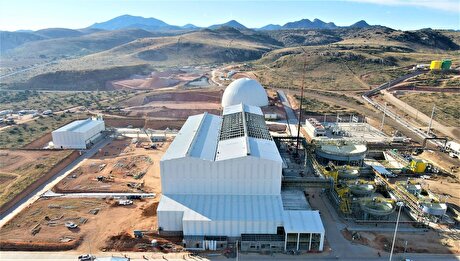
Scientists boast way to extract hydrogen from oil without emitting greenhouse gases

Unlike petrol and diesel, hydrogen produces no pollution when burned. It is already used by some car manufacturers to power vehicles and may also be burned to generate electricity, japantimes.co.jp reported.
But until now the wide-scale roll-out of hydrogen technology has been prohibited by the high cost of separating it from hydrocarbons.
Currently the vast majority of hydrogen used for vehicles is derived from natural gas, the extraction process of which produces planet-warming methane.
Now a group of Canadian engineers say they have come up with a method of getting hydrogen directly from oil sands and oil fields, while leaving carbon dioxide and methane in the ground.
The team behind the research, which was unveiled at the Goldschmidt Geochemistry Conference in Barcelona, said the technology had the potential to supply Canada’s entire electricity requirement for the next 330 years — all without releasing any greenhouse gases.
“Low-cost hydrogen from oil fields with no emissions can power the whole world using mostly existing infrastructure,” Grant Stem, CEO of Proton Technologies, which is commercializing the extraction method, told AFP.
“This is the silver bullet for clean energy and clean climate.”
With global energy demand rising in lockstep with emissions, the United Nations Intergovernmental Panel on Climate change says the world needs to work rapidly to curb greenhouse gases or risk dangerous temperature increases.
Strem said the method could produce hydrogen at between $0.10-0.50 per kilo, compared with the current production cost of around $2 per kilo.
Even abandoned oil fields still contain significant amounts of oil. Strem and the team found injecting oxygen into the fields raised their underlying temperature, freeing hydrogen that can be filtered from other gases.
“The only product in this process is hydrogen, meaning that the technology is effectively pollution- and emission-free,” said Strem.
Experts greeted the possible breakthrough with guarded optimism.
“Making hydrogen from hydrocarbons using oxygen is nothing new — the trick is not releasing the CO2 to the atmosphere,” said Jeremy Tomkinson, company director and CEO at NNFCC The Bioeconomy Consultants.
“It would be really exciting if they had found a way of … ensuring the carbonaceous gases remain locked underground — letting them go to atmosphere would result in no difference to burning the oil above ground at far less energy burden.”
Professor Brian Horsfield, from the GFZ German Research Center for Geosciences, Potsdam, said that extensive field testing would be needed to see how the system works on an industrial scale.
He nevertheless called the project ‘highly innovative and exciting’.
“Declining oilfield infrastructures now stand to get a new lease of life.”


Trump weighs using $2 billion in CHIPS Act funding for critical minerals

Electra converts debt, launches $30M raise to jumpstart stalled cobalt refinery

Codelco cuts 2025 copper forecast after El Teniente mine collapse

Barrick’s Reko Diq in line for $410M ADB backing

Abcourt readies Sleeping Giant mill to pour first gold since 2014

SQM boosts lithium supply plans as prices flick higher

Nevada army depot to serve as base for first US strategic minerals stockpile

Pan American locks in $2.1B takeover of MAG Silver

Viridis unveils 200Mt initial reserve for Brazil rare earth project

Kyrgyzstan kicks off underground gold mining at Kumtor

Kyrgyzstan kicks off underground gold mining at Kumtor

KoBold Metals granted lithium exploration rights in Congo

Freeport Indonesia to wrap up Gresik plant repairs by early September

Energy Fuels soars on Vulcan Elements partnership

Northern Dynasty sticks to proposal in battle to lift Pebble mine veto

Giustra-backed mining firm teams up with informal miners in Colombia

Critical Metals signs agreement to supply rare earth to US government-funded facility

China extends rare earth controls to imported material

Galan Lithium proceeds with $13M financing for Argentina project

Kyrgyzstan kicks off underground gold mining at Kumtor

Freeport Indonesia to wrap up Gresik plant repairs by early September

Energy Fuels soars on Vulcan Elements partnership

Northern Dynasty sticks to proposal in battle to lift Pebble mine veto

Giustra-backed mining firm teams up with informal miners in Colombia

Critical Metals signs agreement to supply rare earth to US government-funded facility

China extends rare earth controls to imported material

Galan Lithium proceeds with $13M financing for Argentina project

Silver price touches $39 as market weighs rate cut outlook

















